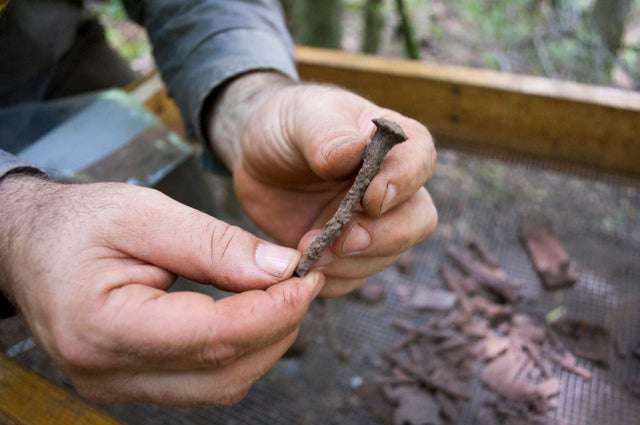Hidden history uncovered
Published 12:00 am Wednesday, July 6, 2016
LaGRANGE — A group of university interns, led by a local archaeologist, are uncovering a hidden history that may add to historians’ understanding of Troup County.
At two sites near Troup Factory, the county’s first textile mill, evidence of an early cabin — possibly a slave shack — and a blacksmith shop dating back nearly 200 years have been discovered and are undergoing excavation near Flat Shoals Creek off Hamilton Road.
“At first, we thought it was one of the early settlement cabins,” archaeologist Patrick Severts said Monday. “It’s possibly related to the Thomas Leslie family, and potentially their servant. That would be about 1850s, and he (the cabin’s occupant) was still around in the 1870s, but he would have been a free man by that time. But, it’s not conclusive.”
Severts and two Kennesaw State University interns are using metal detectors to find large swaths of long-buried iron works — pieces of crude machinery, pot lids, wagon wheels and a cache of nails. It’s the nails, though, that give archaeologists the best markers for dating the site, Severts explained.
“Square nails were utilized until about 1865, or 1870,” Severts said. “Then, the round wire nails come into production, and they dominate. So that’s a good time period where we get this transition and it shows the structure (the cabin) had a long-standing occupation.”
Still more, the archaeologists are finding hand-made nails that were likely produced in a blacksmith shop about 30 yards from the cabin.
“The material we’re recovering, it indicates they were even making nails here,” Severts said. “At that time period — 1827, 1829 — it would have been early enough for a blacksmith shop to make wrought nails. There’s a difference between square cut, machine cut and hand-wrought nails made in the blacksmith shop.”
He stopped and pointed to the stone remains of the blacksmith’s furnace that intern Kaitlen Hitt was carefully uncovering from the dirt.
“They were making nails, right there,” he said with excitement. “Not only that, they were making everything.”
The blacksmith shop is unique because of its age, Severts said. In the 1820s, most blacksmith shops in more populated areas were using coal to fire their furnaces and melt iron, but at the shop near Troup Factory, coal was scarce and pine was used to heat the flames to as hot as 3,000 degrees Fahrenheit.
“They never used wood unless they had to,” Severts said. “But there wasn’t coal here, yet. We’ve found only wood ash, no coal at all, and that’s one of the ways we know it’s an early blacksmith shop.”
Hitt, the intern, reached into the ground near the furnace and pulled up a charred piece of wood — its blackened rings still visible as though it had been recently discarded.
“We had a local blacksmith come look at the site, and he said that’s what it looks like to him,” Hitt said. “Before we even started digging, he came down and looked at the site, and said ‘Well, this is how I would do it. I would stand here, and push my ash out here,’ and that’s exactly, pretty much what we found.”
The iron pieces collected from the site are carefully bagged and documented, and will later be washed, curated and preserved, Hitt said. The blacksmith shop, Severts estimates, was likely built in the mid- to late 1820s, although the research is still ongoing.
Back up the hill at the cabin site, intern Cynthia Sun waved a metal detector over the site, surrounded by hundreds of small, brightly colored flags marking where the detector had picked up evidence of metal.
“Basically, every time it gets that little beep, you can pinpoint it,” she said. “You just sweep it across, and if you get a beep, you pinpoint it and that indicates something’s there, then we flag it.”
The team later goes back and hand draws maps marking where the flags have been placed. They use the points to measure the density of “beeps,” which gives them a better idea of where to dig, she said.
The archaeologists estimate the cabin was built sometime around the 1850s, based on the nails they’re finding in the ground. At some point, they remodeled, because a cache of old nails were found nearby, probably dumped there when the old part of the cabin was replaced. Newer nails were found where the cabin once stood, showing it likely rotted and fell into the ground.
But for Sun, the evidence is more than plots on a grid — it’s personal.
“Someone once lived here, this is your history, your past,” she said. “Especially if it gives a name to who lived here. I feel like that’s always a good thing. For history, you have evidence, that’s how you prove it.”
The interns will continue their work for the next few weeks as they work to curate their findings. They will present their work to the community at a public event, the date and location of which has yet to be set.
Read LaGrange Daily News online and in print for updates.












